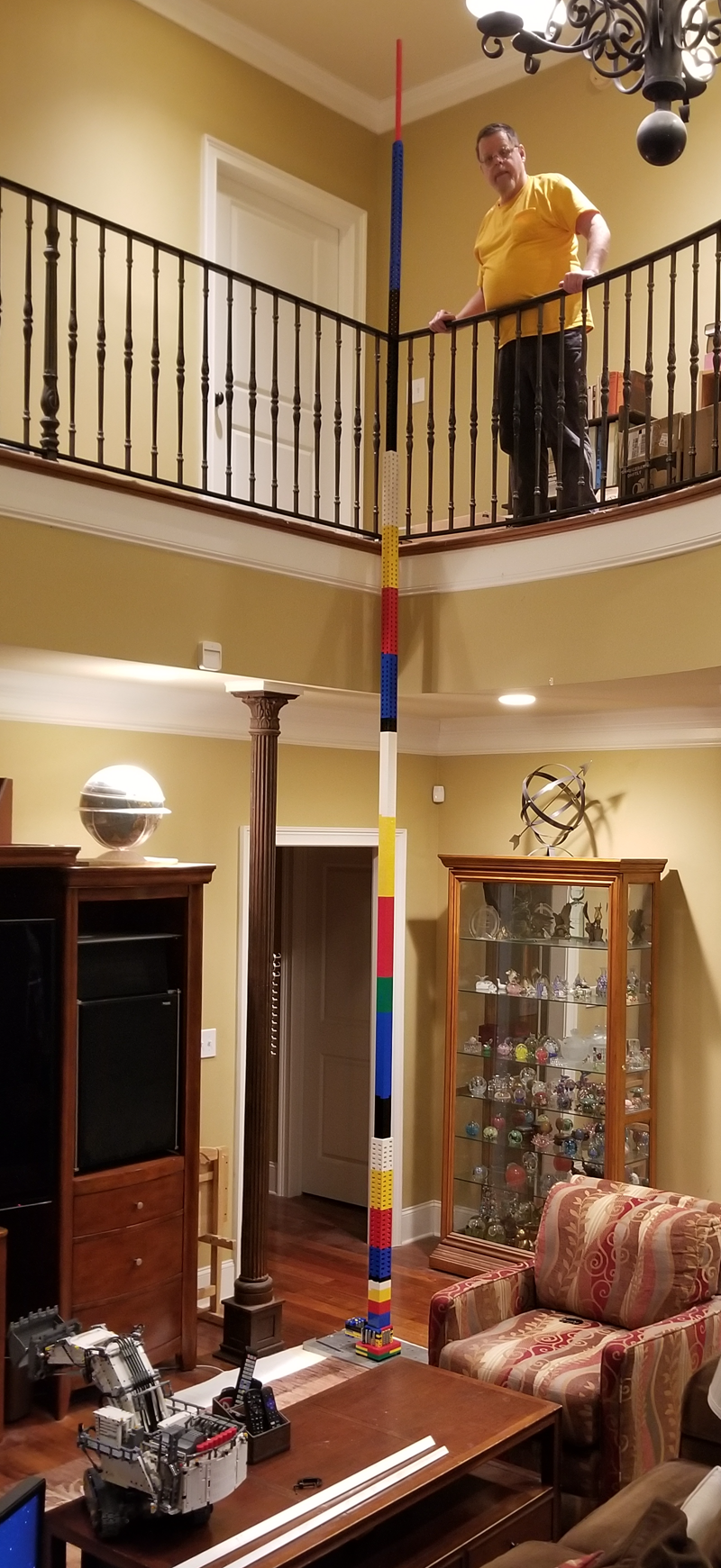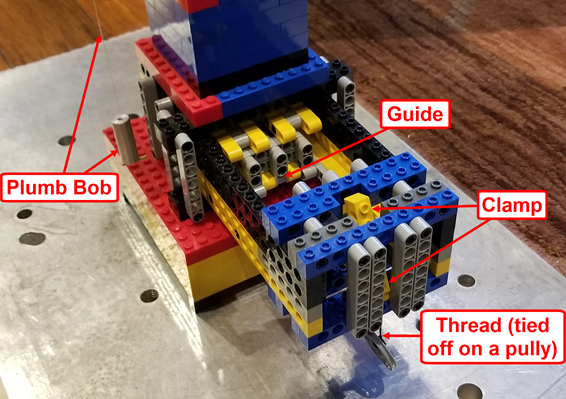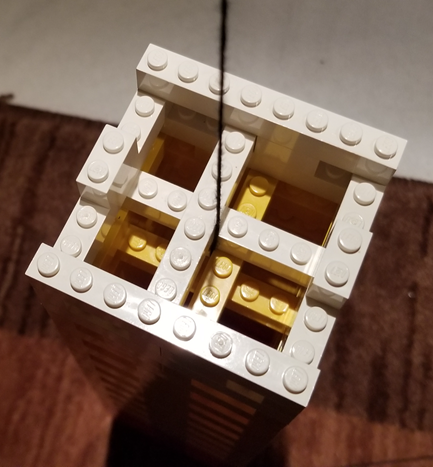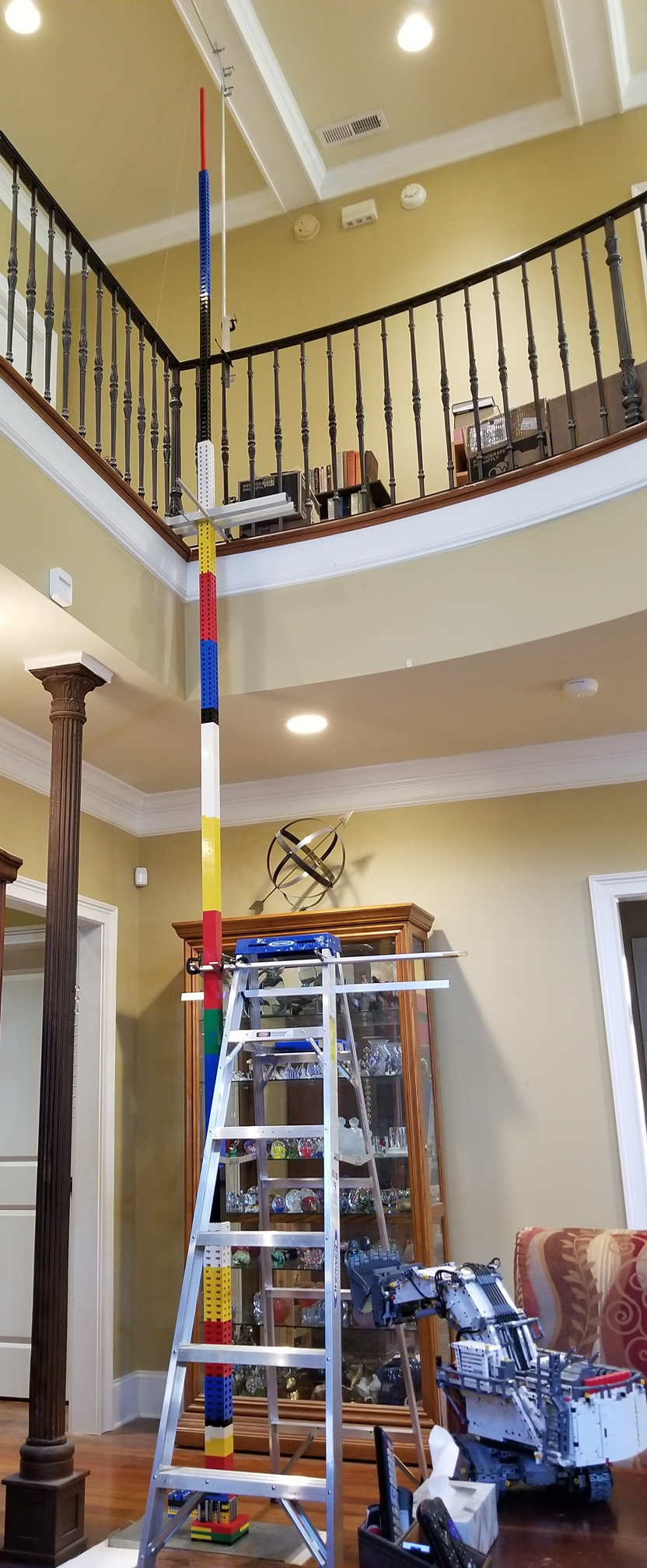I am sharing because it became a bit of a challenge that mirrors the problem-solving processes engineers face in our work every day, starting with conquering assumptions, sizing up limiting factors and available parts, then devising effective solutions.
A Lego tower like this requires a lot more than just stacking the bricks on top of each other. At first glance, it might seem that if you simply keep the center of gravity above the base, it will stand on its own. That’s the easy part, but it is not nearly enough.
Flexibility: The Limiting Factor in Building a LEGO Tower

The flexibility as you build a LEGO tower comes from two sources:
-
The ABS plastic is not very stiff. You probably won’t notice the flexibility in just one block, but it really builds up along 5 meters.
The blocks don’t seat completely. If the blocks are not completely pressed together, there will be a gap between one block and the block immediately below it. During flexing, the gap will add to the bend without offering any significant resistance to bending. - One way to overcome this is to use four vertical tendons (one at each corner). The four threads would be positioned away from the center of the cross-section so they could contribute to the effective cross-sectional moment of inertia. Also, for that approach to work, the thread would need a modulus of elasticity significantly higher than ABS plastic.
For this project, I had restricted myself to LEGO parts only, and I only had one thread from a LEGO Technics crane kit. With that, I reduced the gaps by pre-stressing the blocks, similar to the pre-stressing used in concrete construction. I ran the thread through the center of the tower from top to bottom and pulled it tight, which took up most of the slop. I tied off the thread at the top and built a tensioner for it at the bottom of the tower.
Building a LEGO Tower Tensioner
The clamp is a freely pivoting Lego beam that forms a one-way mechanism: I can pull the thread tight, but when I quit pulling, the tension in the thread holds the clamp, which grabs and holds the thread. Flexibility came into play here, also, which I compensated for with bracing around the mechanism.


A side note: It might seem the thread would help with countering the flexibility of the ABS plastic, but it does not. Because the thread is at the center of the tower, it adds nothing to the cross-sectional moment-of-inertia and so does not increase stiffness. It does increase the bending strength of the tower (by orders of magnitude), but strength is not a limiting factor.
Constructing a Tall LEGO Tower
- Scaffolding: The system braced the tower near the top of a step ladder and at a second-floor level. Without scaffolding, the tower would buckle from the force and lateral motion necessary to add blocks.
- Plumb bob: To aid in alignment, I also created a make-shift yard-arm above the tower to hold a plumb bob that hung near the tower during construction. I had to make the plumb bob lightweight and suspended by a thin thread so that whenever it swung into the tower it didn’t do any damage.
Level base: I used a heavy aluminum plate and leveling shims to provide a level and stable base. The LEGO bricks are not attached to it in any way.

